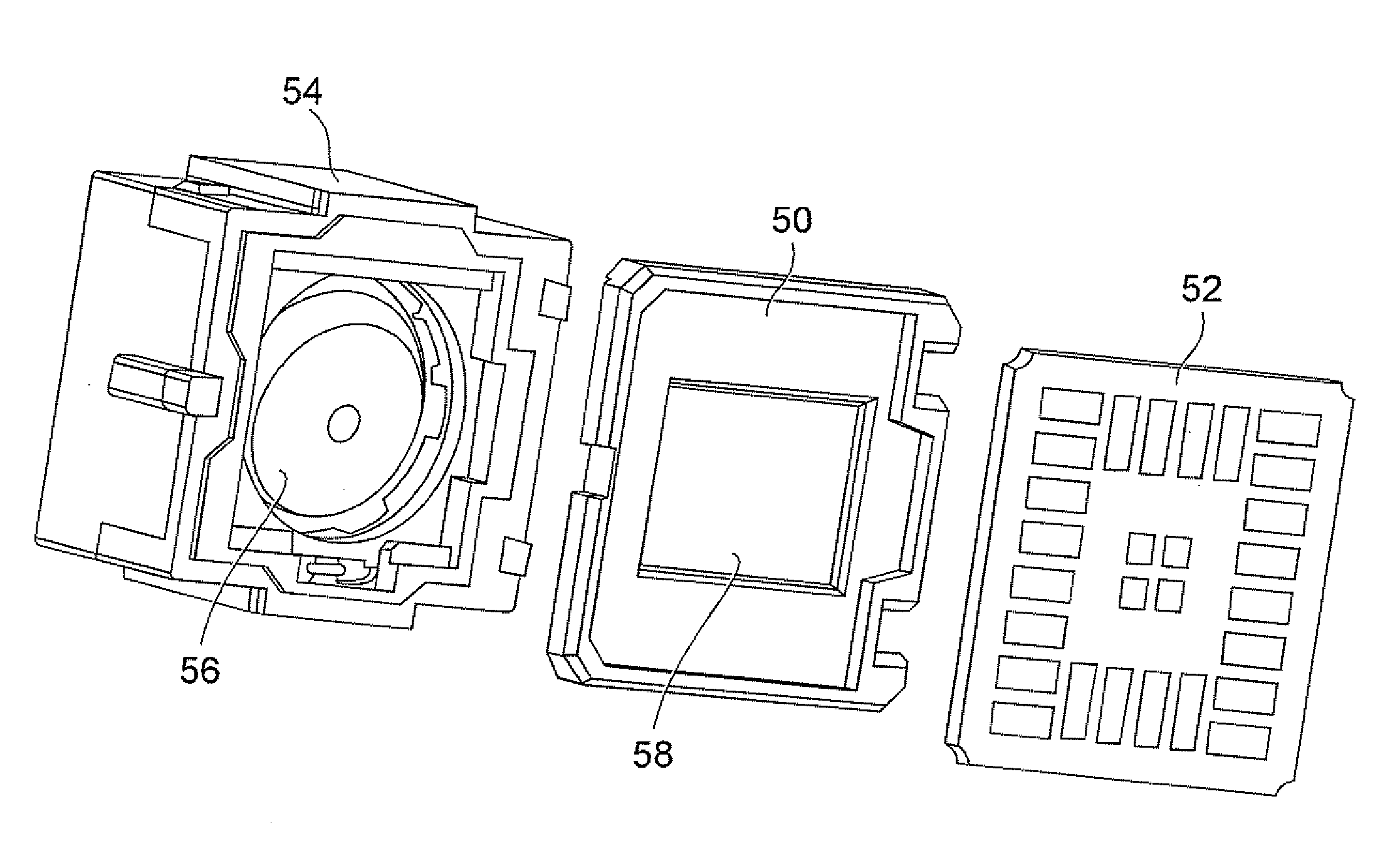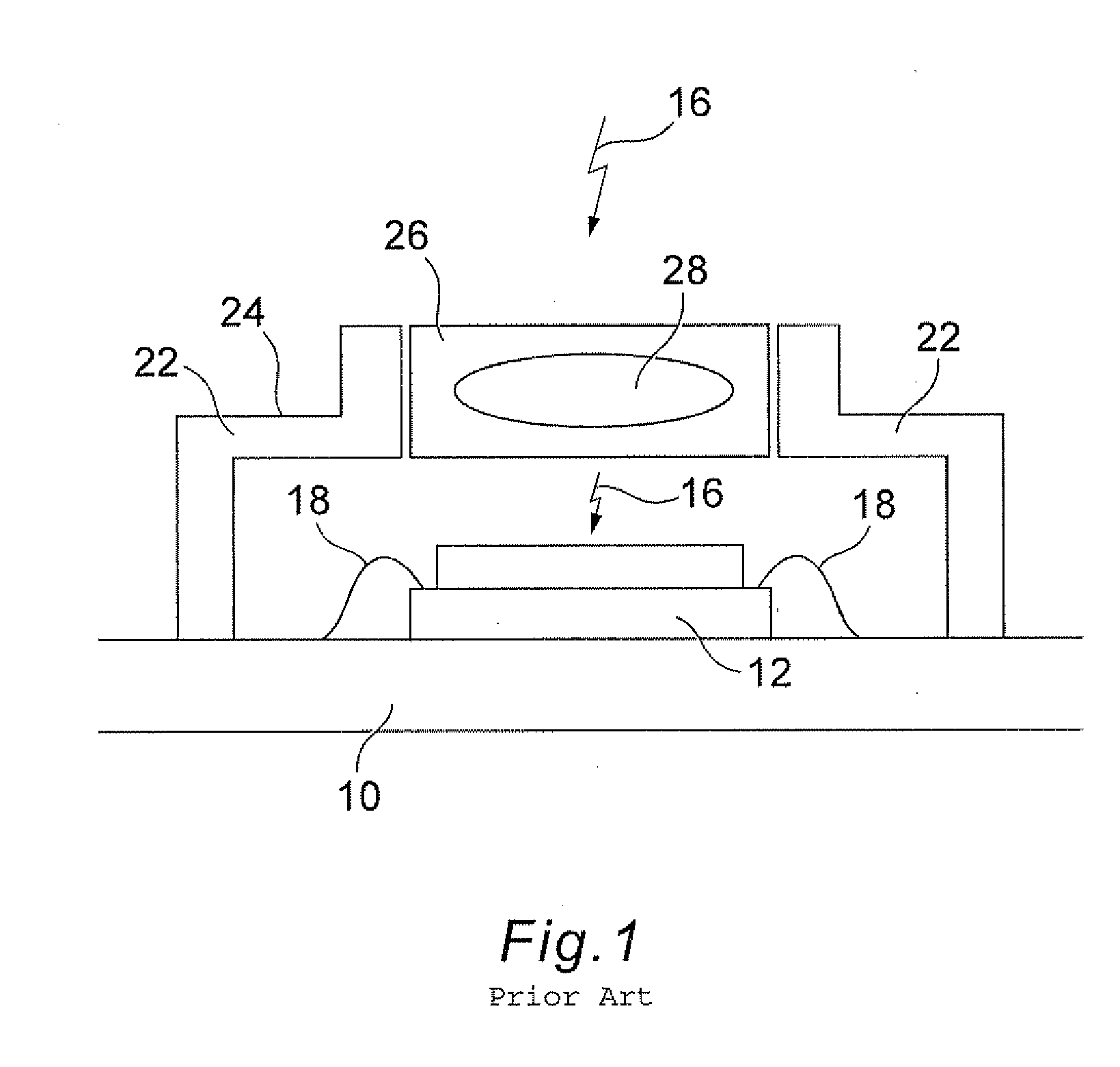Electromagnetic shielding for camera modules
a technology of electromagnetic shielding and camera modules, applied in the direction of magnets, television systems, magnetic bodies, etc., can solve the problems of reducing the overall energy, affecting the correct operation of electronic devices, and affecting the performance of electronic components
- Summary
- Abstract
- Description
- Claims
- Application Information
AI Technical Summary
Benefits of technology
Problems solved by technology
Method used
Image
Examples
Embodiment Construction
[0031]FIG. 1 shows a typical camera module. Selected components are shown for ease of illustration in the present disclosure, and it is to be understood that other components may be incorporated into the structure. An imaging die 12 is assembled on a substrate 10. The substrate 10 could be a PCB, ceramic, or other material. The imaging die 12 comprises a radiation sensitive portion, which collects incident radiation 16. For an image sensor the radiation sensitive portion will usually be photosensitive, and the incident radiation 16 will usually be light including light in the (human) visible wavelength ranges, as well as, perhaps, infrared and ultraviolet. Bond wires 18 are provided for forming electrical connections with the substrate 10. Other electrical connections are possible, such as solder bumps, for example. A number of electrical components are formed in the body of the imaging die 12 and / or the substrate 10. These components may control the image sensing and readout operat...
PUM
| Property | Measurement | Unit |
|---|---|---|
| electrical conductor | aaaaa | aaaaa |
| conductive | aaaaa | aaaaa |
| electrical | aaaaa | aaaaa |
Abstract
Description
Claims
Application Information
 Login to View More
Login to View More - R&D
- Intellectual Property
- Life Sciences
- Materials
- Tech Scout
- Unparalleled Data Quality
- Higher Quality Content
- 60% Fewer Hallucinations
Browse by: Latest US Patents, China's latest patents, Technical Efficacy Thesaurus, Application Domain, Technology Topic, Popular Technical Reports.
© 2025 PatSnap. All rights reserved.Legal|Privacy policy|Modern Slavery Act Transparency Statement|Sitemap|About US| Contact US: help@patsnap.com



